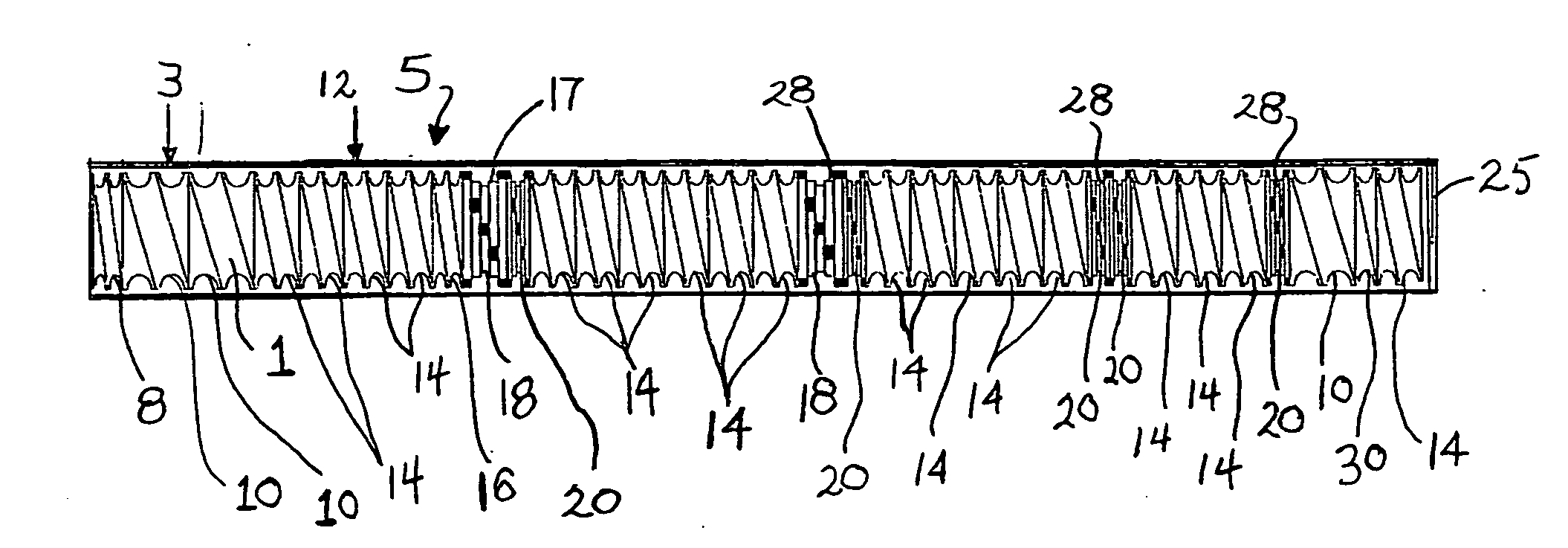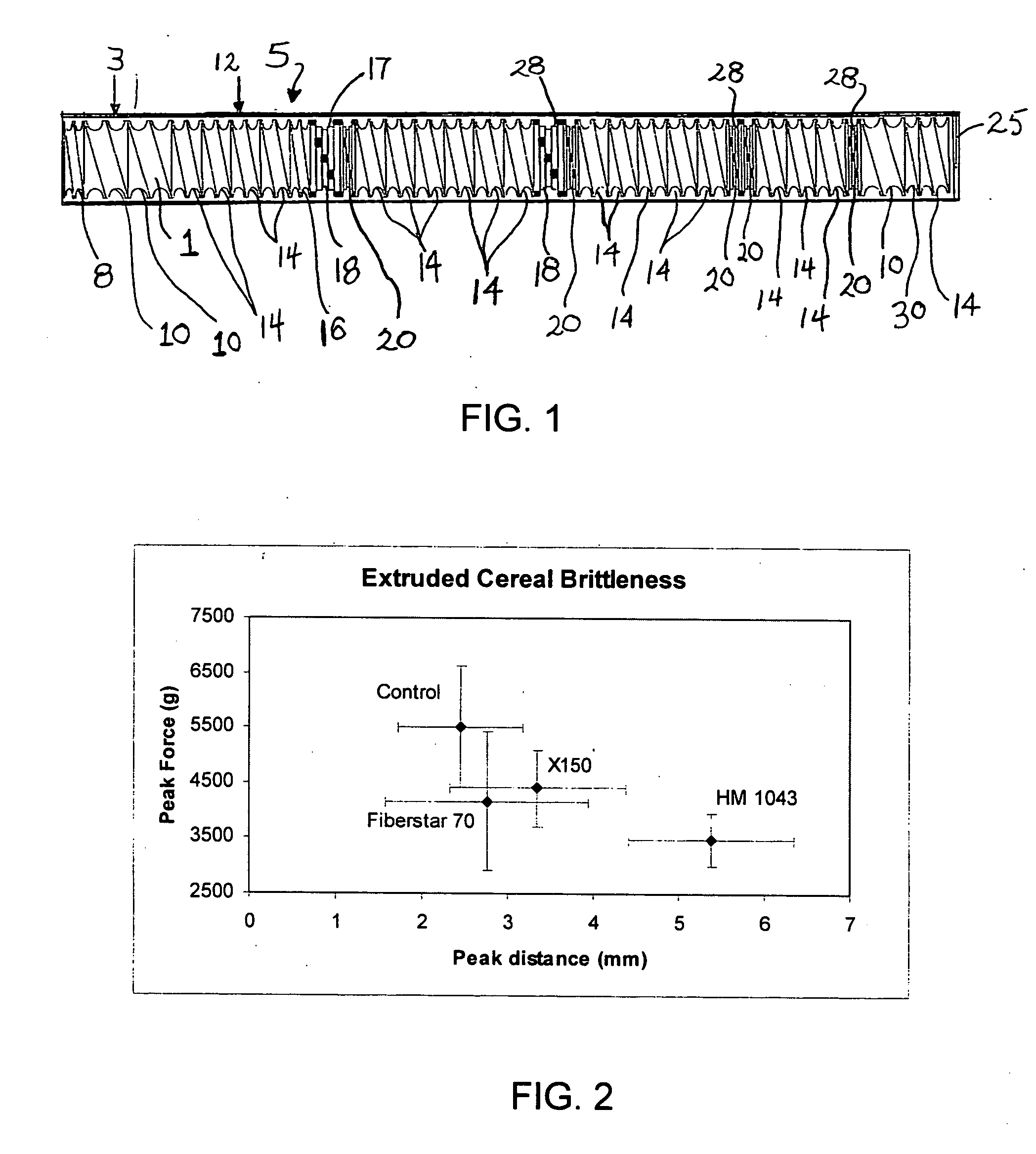Production of low calorie, extruded, expanded foods having a high fiber content
a technology of extruder and food, which is applied in the field of production of low calorie, extruded, expanded foods having a high fiber content, can solve the problems of affecting the extrusion functionality or extrudability of the formulation, affecting the extrusion efficiency, and reducing production rates, so as to achieve the effect of low water holding capacity, substantial loss of extrusion functionality and extrudability, and high melting poin
- Summary
- Abstract
- Description
- Claims
- Application Information
AI Technical Summary
Benefits of technology
Problems solved by technology
Method used
Image
Examples
example 1
[0087] In this example, the extrusion functionality of an enzyme resistant starch type III ingredient or bulking agent having at least 30% by weight of an amylase-resistant starch type III having a melting point with an endothermic peak temperature of at least about 140° C. as determined by modulated differential scanning calorimetry (MDSC), and a water-holding capacity of less than 3 grams water per gram of the starch-based bulking agent (hereinafter also referred to as X-150), is shown to be unexpectedly superior in the production of expanded food products. The unexpectedly superior functionality of X-150 is compared to the extrusion functionality of: [0088] 1) a commercially available, enzyme resistant starch type II ingredient (Hi Maize 1043, produced by National Starch and Chemical Co.), [0089] 2) a commercially available RS type III having an endothermic peak temperature substantially less than 140° C. as determined by MDSC, (Novelose 330, a.k.a. Hi Maize 330, National Starch ...
example 2
Determination of Melting Profile of Resistant Starches Type II, III and IV and of Cereals Containing Resistant Starches Type II, III and IV by MDSC
[0157] The melting profile or thermal characteristics of the resistant starches Type II, III and IV, as well as the cereals containing these ingredients, were determined by modulating differential scanning calorimetry (MDSC). In this technique, the material being analyzed is heated at a steady rate with a programmed saw-tooth pattern of heating and cooling imposed upon the steady rate. The fluctuation in temperature in the saw-tooth pattern is about 1° C. The MDSC technique allows a more precise analysis of the equilibrium melting point because it separates overlapping thermal events such as irreversible decomposition.
[0158] The instruments and method used to characterize the ingredients are: [0159] a) Instrument: TA Instruments Modulated Differential Scanning Calorimeter (MDSC), which includes the TA Instruments DSC 2920 Controller, TA...
PUM
 Login to View More
Login to View More Abstract
Description
Claims
Application Information
 Login to View More
Login to View More - R&D
- Intellectual Property
- Life Sciences
- Materials
- Tech Scout
- Unparalleled Data Quality
- Higher Quality Content
- 60% Fewer Hallucinations
Browse by: Latest US Patents, China's latest patents, Technical Efficacy Thesaurus, Application Domain, Technology Topic, Popular Technical Reports.
© 2025 PatSnap. All rights reserved.Legal|Privacy policy|Modern Slavery Act Transparency Statement|Sitemap|About US| Contact US: help@patsnap.com



